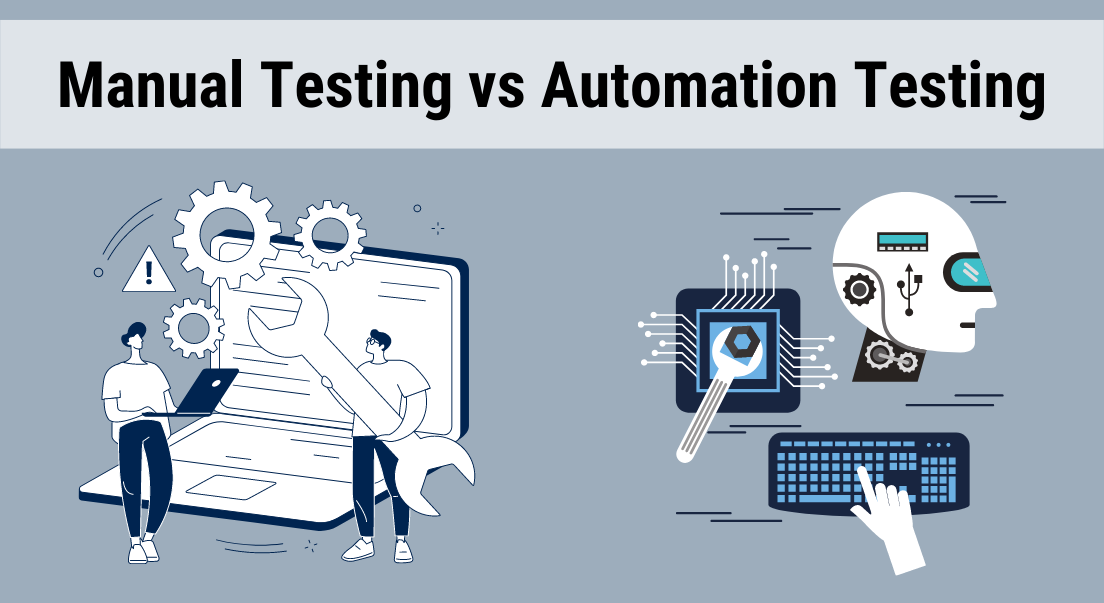From Handbook to Automated Screening: A Comprehensive Guide to Transitioning Efficiently and Efficiently
In the world of software testing, the change from handbook to automated procedures has come to be an increasingly vital transition for organizations seeking to boost effectiveness and accuracy in their screening practices. As technology remains to breakthrough, the need for seamless and efficient automatic testing approaches has actually never been much more important. The trip from guidebook to automated testing is not without its obstacles, however when approached purposefully and with a clear strategy in mind, the benefits can be substantial - automation testing. In this detailed guide, we will explore essential steps and factors to consider essential for an effective change, from the initial selection of tools to the assimilation of automation into existing operations. Remain tuned to reveal the understandings that will help lead the way for a smoother and extra effective testing procedure.
Benefits of Automated Testing
Automated testing uses countless benefits, improving efficiency and precision in software program development procedures. One key benefit is the considerable decrease in testing time. Automated tests can be run concurrently on numerous devices and operating systems, considerably speeding up the screening phase compared to hands-on testing. This enhanced effectiveness enables faster comments on the top quality of the software program, allowing developers to determine and deal with concerns immediately.
Additionally, automated testing guarantees a greater degree of precision in spotting problems. Because automated examinations comply with predefined manuscripts, human mistake is reduced, bring about more trustworthy test results. Consistency in testing is additionally improved, as automated tests execute the very same steps exactly each time they are run. This consistency is crucial in guaranteeing that all functionalities of the software application are extensively evaluated, minimizing the chance of undetected bugs sliding with to manufacturing.
Choosing the Right Devices

First of all, analyze your objectives and needs. Recognize the extent of your project, the innovations involved, and the ability of your group. This analysis will certainly aid you determine the functions and abilities you need in your screening tools.
Secondly, think about the compatibility of the tools with your existing systems and processes. Smooth integration with your present software application development lifecycle is necessary to guarantee a smooth shift to automation.
Furthermore, examine the scalability and versatility of the devices. As your testing requires develop, the devices must be able to adjust and suit changes properly.
Finally, factor in the assistance and neighborhood around the devices. Robust support and an active individual area can offer valuable resources and assistance when carrying out automated testing. By thoroughly taking into consideration these facets, you can choose the right tools that line up with your needs and set the phase for a successful shift to automated screening.
Composing Reliable Test Scripts

When crafting test scripts, it is vital to take into consideration the specific demands of the software application being tested and guarantee that the manuscripts deal with all important capabilities. Detailed and clear naming conventions for test manuscripts and examination cases can enhance readability and maintainability. Furthermore, including mistake handling mechanisms within the test scripts can aid in determining and resolving issues quickly.
Moreover, arranging test scripts into modular elements can enhance reusability and scalability, reducing redundancy and enhancing efficiency in test manuscript maintenance. Normal testimonials and updates to evaluate scripts are essential to equal advancing software needs and performances. By following these concepts, testers can produce reliable and durable test scripts that add substantially to the navigate to these guys success of automated testing processes.
Integrating Automation Into Workflows
By perfectly integrating automated testing devices like Selenium or Appium right into the software growth lifecycle, teams can achieve faster responses on code adjustments, leading to quicker insect discovery and resolution. This assimilation enables for constant testing throughout the growth process, ensuring that any type of concerns are identified early on, resulting in higher software program quality. Appropriate integration of automation devices requires collaboration between development, screening, and operations groups to establish a unified workflow that enhances performance and efficiency in supplying top notch software program products.
Making Certain a Smooth Transition
Successfully transitioning to automated screening entails meticulous preparation and cautious implementation to decrease disturbances and maximize efficiency in the software program development process - automation testing. To guarantee a smooth shift, it is crucial to begin by carrying out a comprehensive evaluation of the current screening procedures and recognizing locations where automation can bring one of the most significant benefits. Engaging with all stakeholders beforehand while doing so, including developers, testers, and task managers, is vital for gathering support and buy-in for the automation initiative
Interaction is key throughout this transition phase. Clear communication of the goals, advantages, and assumptions of automated screening helps to manage any resistance or concerns that might occur. In addition, providing sufficient training and resources for team members to upskill in automation tools and methods is crucial for making sure a successful shift.

Conclusion
To conclude, transitioning from guidebook to automated screening offers countless advantages, consisting of enhanced effectiveness and reliability. By selecting the ideal devices, composing efficient test scripts, and integrating automation perfectly right into process, companies can make certain a smooth and effective change. It is essential to accept automation as a beneficial asset in software program screening processes to improve general quality and efficiency.
In the realm of my explanation software screening, the change from manual to automated processes has come to be an increasingly essential shift for organizations seeking to enhance effectiveness and precision in their screening techniques. Automated tests can be run concurrently on multiple tools and operating systems, dramatically speeding up the screening stage compared to hand-operated screening. Uniformity in screening is likewise enhanced, as automated tests perform the very same steps specifically each time they are run.To make certain the successful execution of selected screening tools, the creation of reliable test manuscripts plays an essential function in confirming the capability and performance of automated procedures use this link - automation testing. By following these principles, testers can develop efficient and robust test scripts that add considerably to the success of automated screening procedures